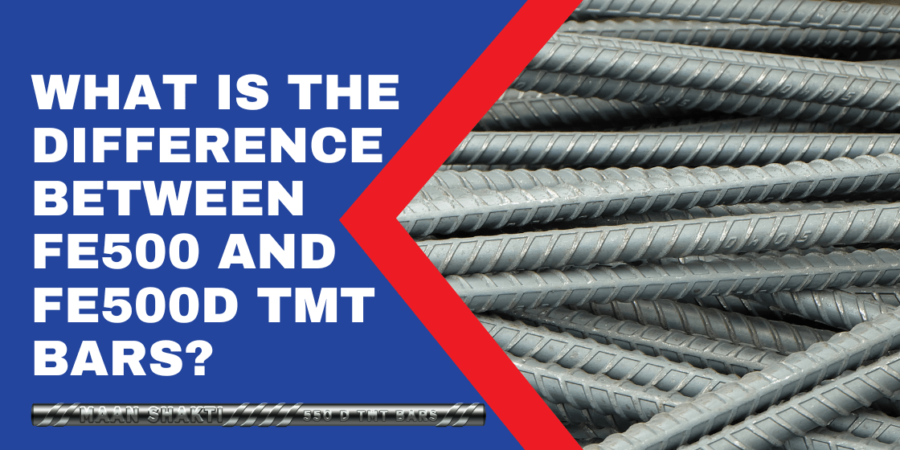TMT bars are the backbone of every construction project. From foundations to slabs to beams and pillars, each and every part of construction requires a TMT. The wrong grade of TMT bars will definitely have a negative impact on the structure. It will be weak and won’t adapt to the temperature on the outside.
Why Do Structures Need TMT Bars?
- Their strength makes them the appropriate material to utilize with concrete. This strengthens and gives flexibility to structures.
- TMT bars have anti-rust qualities. They are corrosion-resistant due to the special treatment during the water-cooling phase.
- TMT bars can survive temperatures of 400 – 600 degrees Celsius, which guarantees structural integrity even during a fire.
- The soft core of TMT bars makes them highly flexible. Consequently, the structures get more room to move around during seismic activity.
- TMT bars are comparatively cost-effective since less steel is required during construction. This lowers the price of materials and saves money for storage and shipping.
Why Do Fe500 & Fe500D Get The Most Attention?
The “Fe” in different grades of TMT bars refers to “Iron”, the number stands for steel’s yield strength, and “D” stands for “ductility.”. The grade is one of the most important considerations when choosing TMT bars. Different TMT bars have different chemical makeups. It affects different factors like their tensile strength, yield strength, thermal conductivity, flexibility, and durability. However, the most popular grades for construction are Fe500 and Fe500D.
Fe500 and Fe500D are used in civil construction. Their chemical composition and mechanical properties make them suitable for building reliable and strong structures. Fe500 TMT bars from the best TMT brand in Assam are used to make Reinforced Concrete Cement (RCC) building structures, bridges, and other structures. This is due to their resistance to corrosion, elasticity, and ability to hold dynamic loads. These grades are also suitable for earthquake-prone zones.
Differences in Chemical Constituents
This is probably one of the main differences between Fe500 and Fe500D. Fe500 contains a higher amount of elements such as Carbon, Sulphur, phosphorus, etc. The lower percentage of these chemicals in Fe500D makes them more flexible and gives this grade of TMT bars the ability to withstand higher temperatures. Fe500D is also recommended in locations with vigorous seismic activities and unexpected changes in temperatures. Fe500 is comparatively brittle and might crack in sudden temperature fluctuations. It is essential to know and discuss these details with the TMT wholesale distributor before finalizing a grade for your construction.
Differences in Mechanical Properties
Both Fe500 and Fe500D are manufactured through thermomechanical treatment. They also have the same yield strength, i.e., 500. However, they have different Ultimate Tensile Stress, elongation percentage, and other factors. Fe500D has a higher elongation capacity when compared with Fe500 TMT bars. This means that even though both of these grades begin to deform at the same rate and return to their original shape when the stress is gone, their breaking point is different. Fe500D has a higher breaking point or ultimate tensile stress than Fe500. Eventually, the deformation becomes irreversible and sometimes even permanent.
Which is Better: Fe500 or Fe500D?
From the above analysis, it is clearly understood that Fe500D is better than Fe500.
Fe500D has a higher resistance to seismic activities, corrosion, and other natural causes that might cause the bars damage. It also has lower levels of carbon, which ensures easier and better weldability.
However, it is to be noted that the requirements for construction are always different. In some places, you might find the Fe500 grade to be better performing than Fe500D TMT bars. The specific conditions of the construction site and the type of structure greatly influence these factors. Conducting thorough research and proper analysis of all factors before finalizing on a TMT bar is essential if you want a building with optimum strength.


